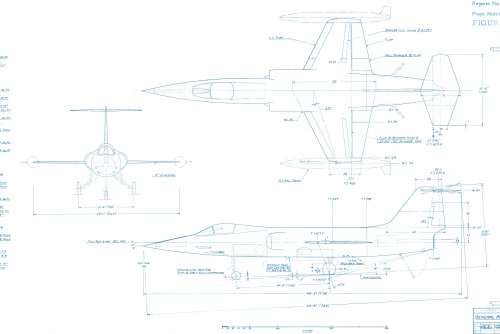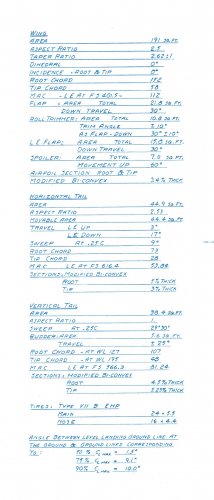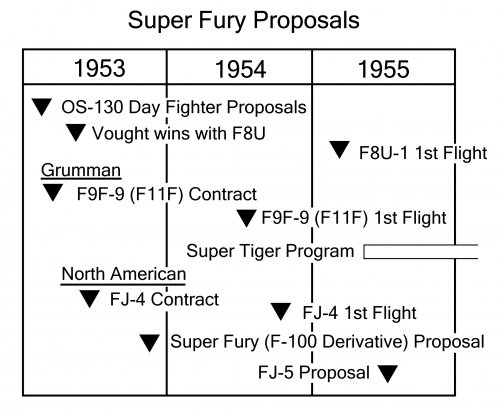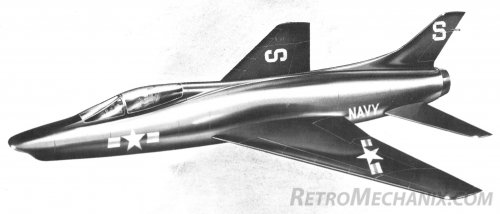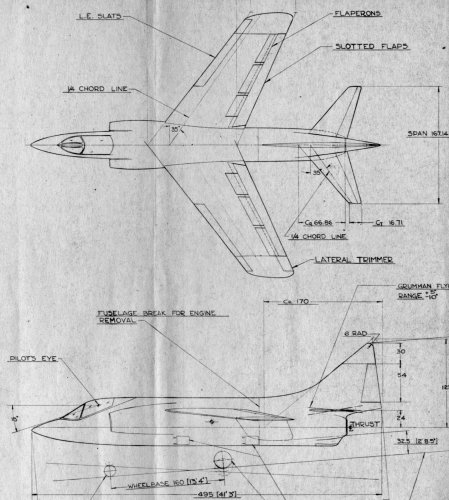OS-130: Competitors to the Vought F-8 Crusader
- Thread starter overscan (PaulMM)
- Start date
Steve Pace
Aviation History Writer
- Joined
- 6 January 2013
- Messages
- 2,266
- Reaction score
- 226
Can you show the keys on that drawing?
XB-70 Guy said:Can you show the keys on that drawing?
This?
Attachments
- Joined
- 27 December 2005
- Messages
- 17,767
- Reaction score
- 26,577
Added to existing topic.
- Joined
- 25 June 2009
- Messages
- 14,767
- Reaction score
- 6,207
The Spangenberg Index gives all of these:
- Consolidated Vultee
- Consolidated Vultee (resubmit.)
- Douglas D-652/-1,-2, 652A ("F5D-2")
- Grumman G-97
- Grumman G-98 (?)
- Lockheed L-242/-1
- McDonnell 90
- McDonnell 91
- North American ESO 4927
- North American ESO 5197 Super Fury
- Northrop N-94/A/B/C
- Temco 31
- Vought V-383
- Vought V-384
- Joined
- 25 June 2009
- Messages
- 14,767
- Reaction score
- 6,207
Coming to think of it, I doubt the "FJ-5" Super Fury could have been proposed for OS-130. It came a bit later, circa 1954-1955, not 1953. In the above list there are two NAA designs, of which I believe only ESO 4927 (NOT called the Super Fury in the index) was the real OS-130 proposal. I wonder if the ESO 5197 Super Fury could have been in competition against the Grumman G-98J/L Super Tiger development, which would make a lot of sense, year-wise and also from the use of the "Super" prefix for both.

Proposed Super Furies
F2J The designation was never officially made by the Navy, but two North American proposals (three if you count the "FJ-5") could have resu...
- Joined
- 27 December 2005
- Messages
- 17,767
- Reaction score
- 26,577
Proposed Super Furies
F2J
The designation was never officially made by the Navy, but two North American proposals (three if you count the "FJ-5") could have resulted in an F2J. The first was in the OS-130 competition. Like the winning Vought design, it featured a two-position variable incidence wing.
George Spangenberg wrote that it came in a close second and lost primarily because North American projected that the gross weight of its J57-powered proposal was almost 30,000 lbs, considerably more than the Vought proposal's with the same engine. Spangenberg correctly predicted that the Vought weight was optimistic, but would still be less than the North American design and therefore provide better performance.
Thanks to Doug Siegfried at Hook magazine for the artist's concept and to Tony Buttler for the three-view. (Note: the three-view is the J65-powered proposal; like Vought and most of the other offerers, North American submitted both J65 and J57-powered proposals.)
In November 1953, North American tried to end run the F8U program with a Super Fury proposal, which was a carrier-based derivative of the J57-powered F-100B (stretched fuselage, wing flaps, etc.) being proposed to the Air Force. The F-100B was a redesign of the J57-powered F-100A that incorporated the latest supersonic flight technology and almost doubled the internal fuel capacity. The inlet was now swept back and incorporated variable geometry, with a horizontal ramp on the upper side used to establish and control the shock wave associated with supersonic flight. Unlike the F-100A, the fuselage was to be area ruled for improved transonic performance and lower supersonic drag. It had also been lengthened by almost four feet to increase its fineness ratio and add more fuel. The wing was basically the same in shape and area, but it was thinner and designed to hold fuel. Flaps were added and boundary layer control incorporated for slower takeoff and landing speeds. The main landing gear now featured dual wheels.
For the Super Fury proposal, in addition to adding the requisite tail hook, wing folding, catapult hooks, etc., other changes were made to the F-100B design to further improve the prospect of carrier suitability. When the flaps were lowered, the folding portion of the wings was repositioned to provide 15 degrees of anhedral to improve lateral stability and aileron control at low speeds. The fuselage speed brake was intended to be deployed on approach and would retract automatically on touchdown. Another innovation was a retractable gun sight to improve over the nose visibility.
North American chose to propose armament of three T-160 20 mm cannons. Dual rotating rocket launchers contained 44 two-inch folding fin rockets could be substituted for the guns. One feature from the F-100B design was an alternative forward fuselage that incorporated a radome housing a small search radar in place of the APG-30 ranging radar.
Although it had the same engine and equipment, the Super Fury was heavier than Crusader so it would also have cost somewhat more. Although shorter, only 22 could be spotted in the requisite deck space compared to 25 F8Us . The Super Fury proposal was also deficient in military power ceiling. However, it was projected to be slightly better than just supersonic on military power, faster than required on combat power, have considerably more range on internal fuel and external fuel, and otherwise meet or exceed the requirements.
The proposal’s most compelling feature was that a prototype of sorts was flying and first Super Fury production delivery was expected in early 1956 on that basis. As it turned out, the Air Force decided not to proceed with the F-100B (although it did seque into the F-107) and the Vought F8U Crusader was a success.
FJ-5
Both Grumman and North American had previously gotten contracts from the Navy for new day fighters - the original F9F-8 (then F9F-9, then F11F-1) and FJ-4 respectively - using the funds provided to the F9F-6/7 and FJ-3 production contracts for product improvements. Both were powered by the Wright J65, the same as the FJ-3 and A4D. In accordance with the vision of the then Fighter Class Desk officer, the FJ-4 did not have an afterburner and was optimized for low cost of acquisition and operation. It was, however, to be a great dog fighter, with excellent maneuverability at altitude and near-sonic speed and did in fact achieve those goals. Grumman managed to get an afterburner on the F11F but it was a new Wright design and disappointed in thrust and therefore supersonic performance.
Against all comers, Vought had won the competitive day fighter contract in accordance with a new specification that required an afterburner. Both J65 and J57-powered designs were proposed, with the Navy selecting the higher performance J57 design. At this point, Grumman and to an even greater degree, North American, were in a disadvantageous position if the J57 turned out to be as good as expected and the Crusader met Vought's performance projections.
Both Grumman and North American then turned to the new General Electric J79 engine which was not available for the competitors to consider for the 1952 day fighter proposals in futile attempts to provide an attractive alternative to the F8U. Grumman apparently got to the Navy first and/or best, since BuAer began planning to buy a J79-powered F11F Super Tiger as the F12F. (One more time, the F12F was not the Grumman Design 118.) Unfortunately for Grumman, the XF8U went supersonic on its first flight in March 1955 and the F12F plan was dropped. However, BuAer did contract with Grumman for two J79-powered F11F-1Fs because they wanted to get some flight experience on the J79 before the F4H flew with it. Grumman was still hopeful that Vought would stumble with the F8U and/or the F11F-1F would be good enough to reinstate a Navy production program and/or be of interest to foreign buyers. North American's proposal didn't even get that far. Vought, of course, didn't stumble. The F8U was even faster than they guaranteed.
Strictly speaking, the "FJ-5" wasn't a navalized F-107, which was powered by the bigger J75. The FJ-5 had a gross weight of about 20,000 pounds and the F-107, 40,000 pounds. The two roughly compared like the Crusader I and the Crusader III. The FJ-5 had a bigger wing relative to its weight since it had to takeoff and land from aircraft carriers while the F-107, like the F-105, was to be flown from mile+ long runways. The designation doesn't appear to have been officially applied.

Proposed Super Furies
F2J The designation was never officially made by the Navy, but two North American proposals (three if you count the "FJ-5") could have resu...
Attachments
-
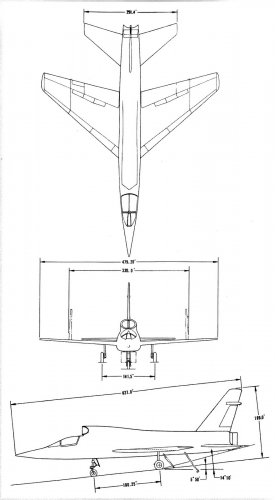 FJ-5 3 View.JPG122.6 KB · Views: 557
FJ-5 3 View.JPG122.6 KB · Views: 557 -
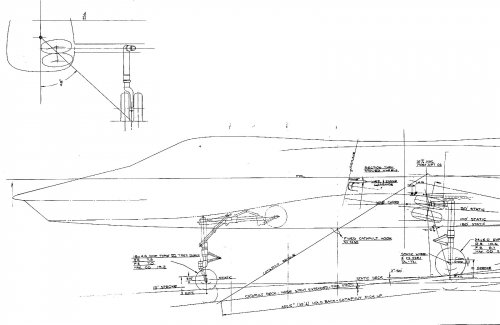 Super Fury Landing Gear-edit.jpg151.3 KB · Views: 507
Super Fury Landing Gear-edit.jpg151.3 KB · Views: 507 -
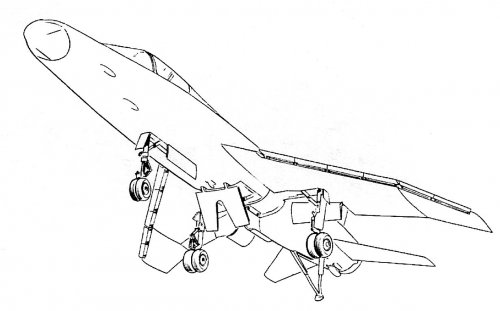 Super Fury Landing Configuration-edit.jpg86.4 KB · Views: 556
Super Fury Landing Configuration-edit.jpg86.4 KB · Views: 556 -
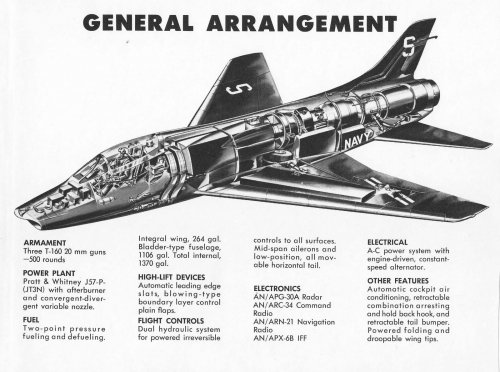 General Arrangement low res.jpg340.6 KB · Views: 1,093
General Arrangement low res.jpg340.6 KB · Views: 1,093 -
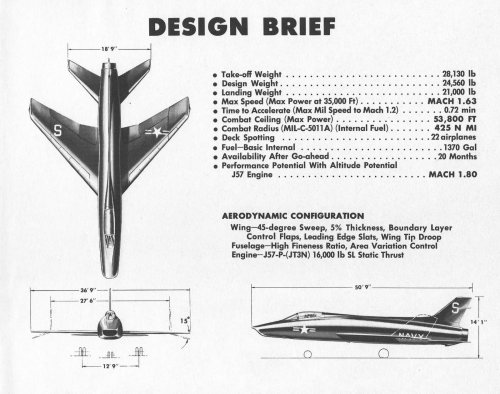 Design Brief low res.jpg277.1 KB · Views: 1,139
Design Brief low res.jpg277.1 KB · Views: 1,139 -
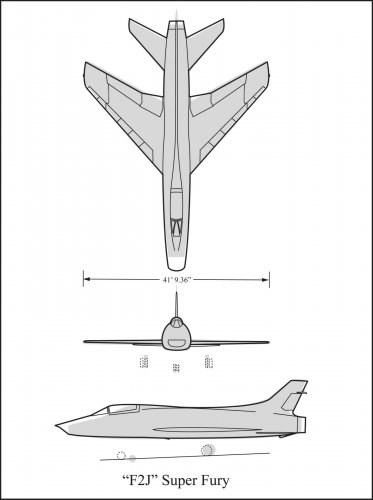 F-100A vs F2J.jpg91.5 KB · Views: 1,168
F-100A vs F2J.jpg91.5 KB · Views: 1,168 -
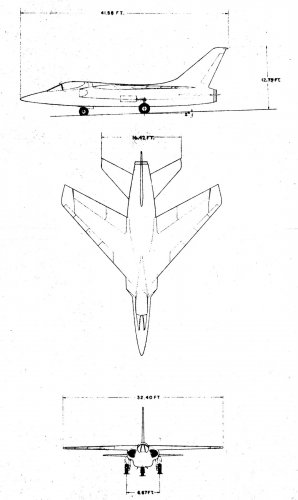 NAA OS-130 fighter cleanup.jpg112.4 KB · Views: 1,287
NAA OS-130 fighter cleanup.jpg112.4 KB · Views: 1,287 -
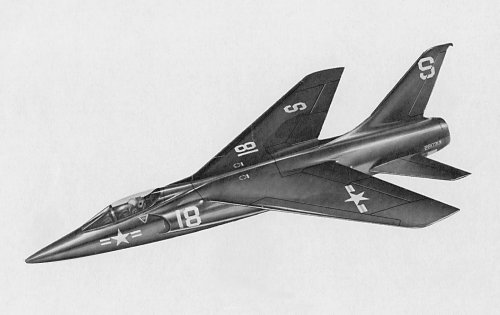 F2J Illustrator.jpg118 KB · Views: 1,285
F2J Illustrator.jpg118 KB · Views: 1,285
Last edited:
- Joined
- 3 January 2006
- Messages
- 1,224
- Reaction score
- 945
I do have to wonder if there is any relationship between the designs in question and the later, losing North American for an A-4 replacement? In the competition that lead to the A-7, North American was definitely a bidder, but nothing has been uncovered so far?
- Joined
- 25 June 2009
- Messages
- 14,767
- Reaction score
- 6,207
An additional McDonnell design, the Model 93, was ALSO submitted to OS-130. Interestingly, however, the Models 90 and 91 correspond to OS-130-3 while Model 93 corresponds to OS-130-1. Is anybody aware of similar dash numbers for this (and other) specifications? And if so, do they indicate an alteration by the Navy in the original specification, or the fact that the initial specification contained from the start a series of possible configurations?
Stargazer2006 said:An additional McDonnell design, the Model 93, was ALSO submitted to OS-130. Interestingly, however, the Models 90 and 91 correspond to OS-130-3 while Model 93 corresponds to OS-130-1. Is anybody aware of similar dash numbers for this (and other) specifications? And if so, do they indicate an alteration by the Navy in the original specification, or the fact that the initial specification contained from the start a series of possible configurations?
When first issued in September 1952, the specification emphasis was on small and simple; maximum speed was to be Mach 1.0 at 35,000 feet. In November, after the proponent for that emphasis (who was responsible for the FJ-4 and the F9F-9) moved on to his next assignment, the desired speed was changed to Mach 1.2 at 35,000 feet. Small and simple became secondary considerations.
Stargazer2006 said:The Spangenberg Index gives all of these:
- Consolidated Vultee
- Consolidated Vultee (resubmit.)
- Douglas D-652/-1,-2, 652A ("F5D-2")
- Grumman G-97
- Grumman G-98 (?)
- Lockheed L-242/-1
- McDonnell 90
- McDonnell 91
- North American ESO 4927
- North American ESO 5197 Super Fury
- Northrop N-94/A/B/C
- Temco 31
- Vought V-383
- Vought V-384
The G-97 was the Grumman OS-130 competitor. The G-98 was the F9F-9/F11F Tiger. The North American Super Fury was a post-130 proposal that was an F-100B derivative. (see http://www.secretprojects.co.uk/forum/index.php/topic,9890.0/highlight,super+fury+f2j.html
- Joined
- 27 December 2005
- Messages
- 17,767
- Reaction score
- 26,577
Jared Zichek's new Retromechanix.com website has articles on all the OS-130 contenders, links below. Still doesn't quite come to 22 yet - I make it 21?
The 9 companies submitting proposals were:
Consolidated Vultee
http://retromechanix.com/aerospace/consolidated-vultee-f2y-carrier-based-fighter/
F2Y (Carrier based F2Y-1 Seadart variant)
Douglas
http://retromechanix.com/aerospace/douglas-model-652-f5d-skylancer-proposal/
D-652 (F4D planform with thinner wings, further improvements. Became F5D-1 Skylancer)
D-652-1 (F4D wings, modified fuselage for extra fuel and reduced drag)
D-652-2 (F4D airframe, J-57/Avon options, new avionics)
D-652A (D-652 scaled down to fit Avon)
Grumman
http://retromechanix.com/aerospace/grumman-design-97-day-fighter/
G-97
Lockheed
http://retromechanix.com/aerospace/lockheed-l-242-navalized-star-fighter/
L-242 (Looks very like a naval F-104)
L-242-1 (? - mentioned in Spangenberg index, drawing in ASP:Fighters looks identical to L-242)
McDonnell
http://retromechanix.com/aerospace/mcdonnell-model-9091-carrier-day-fighters/
Model 90 (larger version of design, J57/J67/J71/J73 engine)
Model 91 (J65 powered, smaller and lighter weight version)
Model 93 (J57 OS-130 design, no more details: no submission appears in National Archive)
North American
http://retromechanix.com/aerospace/north-american-os-130-class-vf-day-fighter/
Two apparent submissions, ESO 4927 and "#2, J-65 engine" in Spangenberg Index. Brochure documents "OS-130 Class VF Fighter" (3 variants, J65 engine with large wing, J-65 engine with small wing, and J57 engine.)
Northrop
http://retromechanix.com/aerospace/northrop-model-n-94-class-vf-day-fighter/
N-94 (Basic design, mid-mounted blended wing/body, J57 engine)
N-94A (Basic design, J65 engine)
N-94B (Alternate, larger wing)
N-94C (Alternate, high wing)
Temco
http://retromechanix.com/aerospace/temco-model-31-vf-day-fighter/
Model 31 (Lightweight tailed delta, Mach 1.25 using a J57 with no afterburner, little like a US SR.177)
Vought
http://retromechanix.com/aerospace/vought-v-383-v-384-day-fighter-original-f8u-crusader-proposal/
V-383 (Larger, J-57 engine)
V-384 (Smaller, J-65, J79 possible future option)
The 9 companies submitting proposals were:
Consolidated Vultee
http://retromechanix.com/aerospace/consolidated-vultee-f2y-carrier-based-fighter/
F2Y (Carrier based F2Y-1 Seadart variant)
Douglas
http://retromechanix.com/aerospace/douglas-model-652-f5d-skylancer-proposal/
D-652 (F4D planform with thinner wings, further improvements. Became F5D-1 Skylancer)
D-652-1 (F4D wings, modified fuselage for extra fuel and reduced drag)
D-652-2 (F4D airframe, J-57/Avon options, new avionics)
D-652A (D-652 scaled down to fit Avon)
Grumman
http://retromechanix.com/aerospace/grumman-design-97-day-fighter/
G-97
Lockheed
http://retromechanix.com/aerospace/lockheed-l-242-navalized-star-fighter/
L-242 (Looks very like a naval F-104)
L-242-1 (? - mentioned in Spangenberg index, drawing in ASP:Fighters looks identical to L-242)
McDonnell
http://retromechanix.com/aerospace/mcdonnell-model-9091-carrier-day-fighters/
Model 90 (larger version of design, J57/J67/J71/J73 engine)
Model 91 (J65 powered, smaller and lighter weight version)
Model 93 (J57 OS-130 design, no more details: no submission appears in National Archive)
North American
http://retromechanix.com/aerospace/north-american-os-130-class-vf-day-fighter/
Two apparent submissions, ESO 4927 and "#2, J-65 engine" in Spangenberg Index. Brochure documents "OS-130 Class VF Fighter" (3 variants, J65 engine with large wing, J-65 engine with small wing, and J57 engine.)
Northrop
http://retromechanix.com/aerospace/northrop-model-n-94-class-vf-day-fighter/
N-94 (Basic design, mid-mounted blended wing/body, J57 engine)
N-94A (Basic design, J65 engine)
N-94B (Alternate, larger wing)
N-94C (Alternate, high wing)
Temco
http://retromechanix.com/aerospace/temco-model-31-vf-day-fighter/
Model 31 (Lightweight tailed delta, Mach 1.25 using a J57 with no afterburner, little like a US SR.177)
Vought
http://retromechanix.com/aerospace/vought-v-383-v-384-day-fighter-original-f8u-crusader-proposal/
V-383 (Larger, J-57 engine)
V-384 (Smaller, J-65, J79 possible future option)
Attachments
-
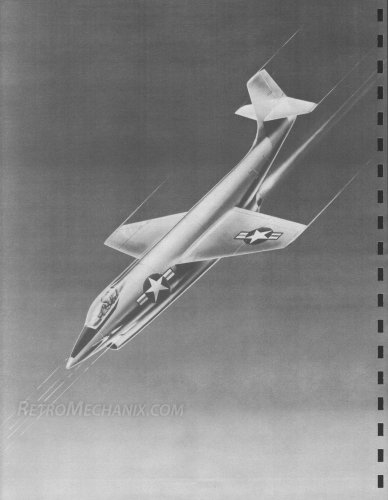 Model 90-artists-impression.jpg245.4 KB · Views: 578
Model 90-artists-impression.jpg245.4 KB · Views: 578 -
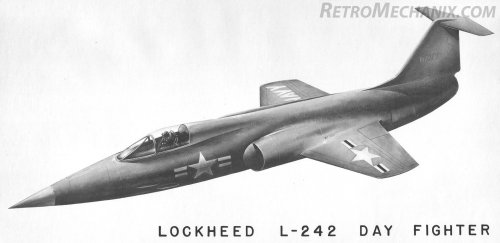 L-242 Artist's Impression.jpg103.7 KB · Views: 584
L-242 Artist's Impression.jpg103.7 KB · Views: 584 -
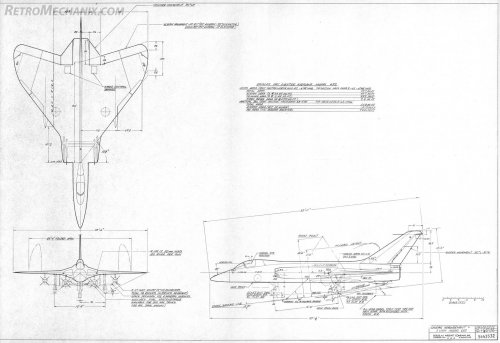 douglas-model-652-plan.jpg194.8 KB · Views: 613
douglas-model-652-plan.jpg194.8 KB · Views: 613 -
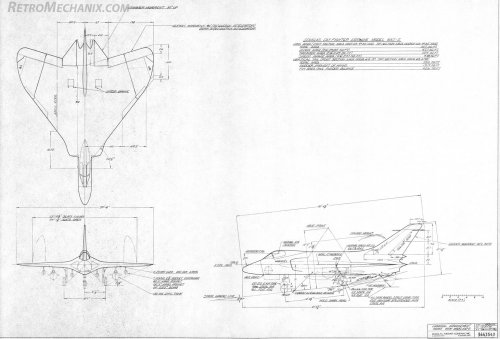 douglas-model-652-2-plan.jpg202.4 KB · Views: 588
douglas-model-652-2-plan.jpg202.4 KB · Views: 588 -
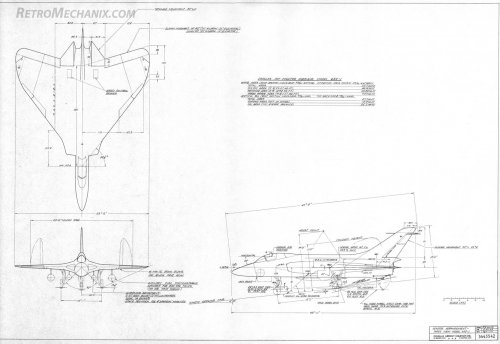 douglas-model-652-1-plan.jpg182 KB · Views: 623
douglas-model-652-1-plan.jpg182 KB · Views: 623 -
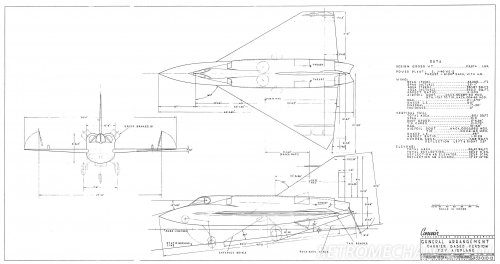 convair_carrier_based_f2y_plan.jpg307.7 KB · Views: 587
convair_carrier_based_f2y_plan.jpg307.7 KB · Views: 587
- Joined
- 4 May 2008
- Messages
- 2,439
- Reaction score
- 763
I'm VERY impressed with the little I've seen so far of Jared's site.
I was checking out the navalized Starfighter, and I was rather perplexed to see a relatively unmodified wing, at least in planform and area. Does anyone know if some sort of lift augmentation, such as blown air for BLC was considered? i saw no mention of it anywhere, but given how the system was employed on some F-104s, it would make sense.
EDIT: correction - his site if FRICKIN' AWESOME
I was checking out the navalized Starfighter, and I was rather perplexed to see a relatively unmodified wing, at least in planform and area. Does anyone know if some sort of lift augmentation, such as blown air for BLC was considered? i saw no mention of it anywhere, but given how the system was employed on some F-104s, it would make sense.
EDIT: correction - his site if FRICKIN' AWESOME
- Joined
- 9 October 2009
- Messages
- 22,033
- Reaction score
- 13,727
It is quite impressive.
- Joined
- 21 May 2006
- Messages
- 3,003
- Reaction score
- 2,288
Jared Zichek's new Retromechanix.com website has articles on all the OS-130 contenders
Very impressive!!
Would love to see and purchase as a book ;D
Regards
Pioneer
- Joined
- 22 January 2006
- Messages
- 4,222
- Reaction score
- 2,036
I've put up a short summary of the NAA Super Fury proposal of November 15, 1953 at RetroMechanix.com:

It features 58 high resolution images of the proposal brochure; I hope you enjoy it! Also be sure to check out the other articles I've put up the last couple days if you have not visited in a while.
-Jared

It features 58 high resolution images of the proposal brochure; I hope you enjoy it! Also be sure to check out the other articles I've put up the last couple days if you have not visited in a while.
-Jared
- Joined
- 27 December 2005
- Messages
- 17,767
- Reaction score
- 26,577
Good point, will try to do that in the future.
Machdiamond
ACCESS: Secret
- Joined
- 15 January 2007
- Messages
- 325
- Reaction score
- 35
Jared, that Super Fury proposal document is a work of Art.
Thank you very much for sharing this online.
--Luc
Thank you very much for sharing this online.
--Luc
royabulgaf
ACCESS: Top Secret
- Joined
- 29 December 2008
- Messages
- 679
- Reaction score
- 353
Hmm- A way for NAA to cheat on the radome problem would be to wire one of the stores pylons to handle one. Or, since this would be mostly an air-to-ground aircraft with a high angle of attack landing gear, maybe a dome behind the nosewheel? It looks like the landing gear is beefed up. Was this due to a rough field requirement?
I've put up a short summary of the NAA All Weather Super Fury proposal of June 4, 1954 at RetroMechanix.com:

It features 78 high resolution images of the proposal brochure and subsequent "Growth Potential" report; it was quite a handsome design, I'm sure you will agree.
-Jared

It features 78 high resolution images of the proposal brochure and subsequent "Growth Potential" report; it was quite a handsome design, I'm sure you will agree.
-Jared
- Joined
- 18 March 2008
- Messages
- 3,529
- Reaction score
- 999
jzichek said:It features 78 high resolution images of the proposal brochure and subsequent "Growth Potential" report; it was quite a handsome design, I'm sure you will agree.
Furiously good.
- Joined
- 25 June 2009
- Messages
- 14,767
- Reaction score
- 6,207
Fantastic material! I'm impressed by the quality of the scans.
Quite clearly, the Super Fury was a direct forerunner of the NA-211, the first F-100B (F-107) project with identically-shaped twin ventral intakes.
Quite clearly, the Super Fury was a direct forerunner of the NA-211, the first F-100B (F-107) project with identically-shaped twin ventral intakes.
Maveric
Fight for yor Right!
- Joined
- 14 January 2007
- Messages
- 2,232
- Reaction score
- 855
jzichek said:I've put up a short summary of the NAA All Weather Super Fury proposal of June 4, 1954 at RetroMechanix.com:

It features 78 high resolution images of the proposal brochure and subsequent "Growth Potential" report; it was quite a handsome design, I'm sure you will agree.
-Jared
Anybody know the NA-number?
- Joined
- 18 March 2008
- Messages
- 3,529
- Reaction score
- 999
Maveric said:Anybody know the NA-number?
NA-x is for contracts only not proposal designs. No $$$ from US Navy, no NA- from North American Aviation.
Yes, there is definitely a close relationship between the All Weather Super Fury and the NA-211/F-100B; would be interesting to overlay the three-views to see how closely they match up. I don't have time at the moment, but perhaps someone here on the forum can give it a try.
XP67_Moonbat
ACCESS: Top Secret
- Joined
- 16 January 2008
- Messages
- 2,272
- Reaction score
- 547
What am I looking at here?
- Joined
- 31 May 2009
- Messages
- 1,154
- Reaction score
- 678
XP67_Moonbat said:What am I looking at here?
It's the bottom half of a semi-colon.
circle-5 said:XP67_Moonbat said:What am I looking at here?
It's the bottom half of a semi-colon.
It's a sno-cone maker.
- Joined
- 26 May 2006
- Messages
- 34,946
- Reaction score
- 15,838
Attachments
- Joined
- 21 May 2006
- Messages
- 3,003
- Reaction score
- 2,288
Mark Nankivil said:A couple of photos of a display model in the possession of the Vought Retiree's Club aka - Heritage Foundation. This is a very early look at the F-8 and gives an idea of where it evolved from. Too bad a bubble canopy did not remain as part of the final design...
Enjoy the Day! Mark
G'day Mark.
Ive been looking over this topic again, and cant help be drawn to these pictures of the model you posted.
Going by scale/size of pilot, could this model be the smaller and lighter V-384, as opposed to the V-383 (F8U-1) Crusader?
Also Id like to ask if you have managed to find anything more on the V-384 in your travels? As I haven't found or heard of Navy's evaluation of the V-384 - except the Navy's preference of a J57 powered design.
Regards
Pioneer
- Joined
- 13 June 2007
- Messages
- 2,173
- Reaction score
- 3,101
Hi Pioneer -
That may very well be - nothing noted on the stand but agree with you if scaled by the size of the pilot in the cockpit. Can't recall if I knew/realized at the time there were two variants of the Crusader being proposed. I know I've learned much since then!
Keep an eye out for Bill Spidle's upcoming book on the Crusader being published by Specialty Press. A long term labor of love by a good friend and fellow scanoholic!
Enjoy the Day! Mark
That may very well be - nothing noted on the stand but agree with you if scaled by the size of the pilot in the cockpit. Can't recall if I knew/realized at the time there were two variants of the Crusader being proposed. I know I've learned much since then!
Keep an eye out for Bill Spidle's upcoming book on the Crusader being published by Specialty Press. A long term labor of love by a good friend and fellow scanoholic!
Enjoy the Day! Mark
Similar threads
-
US Navy Outline Specification OS-112
- Started by Stargazer
- Replies: 23
-
-
General Dynamics and Vought Navalised F-16s to VFAX/NACF requirement
- Started by Mark Nankivil
- Replies: 85
-
Vought Crusader for F-X (1962) instead of Northrop F-5A
- Started by Archibald
- Replies: 18
-
US Navy 1960-1963 VAX supersonic A-4 replacement program
- Started by Skybolt
- Replies: 49

